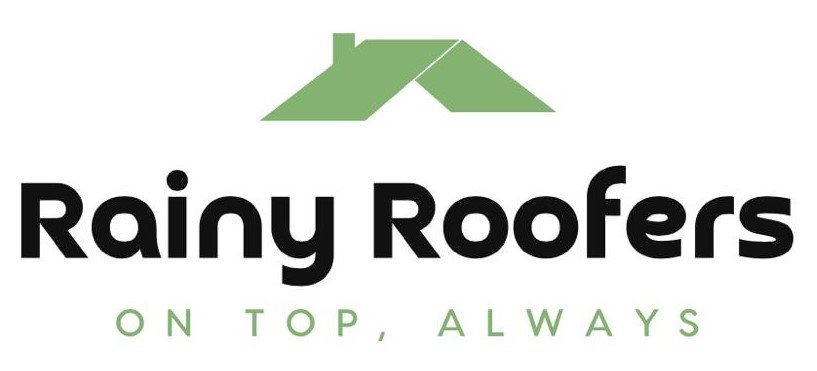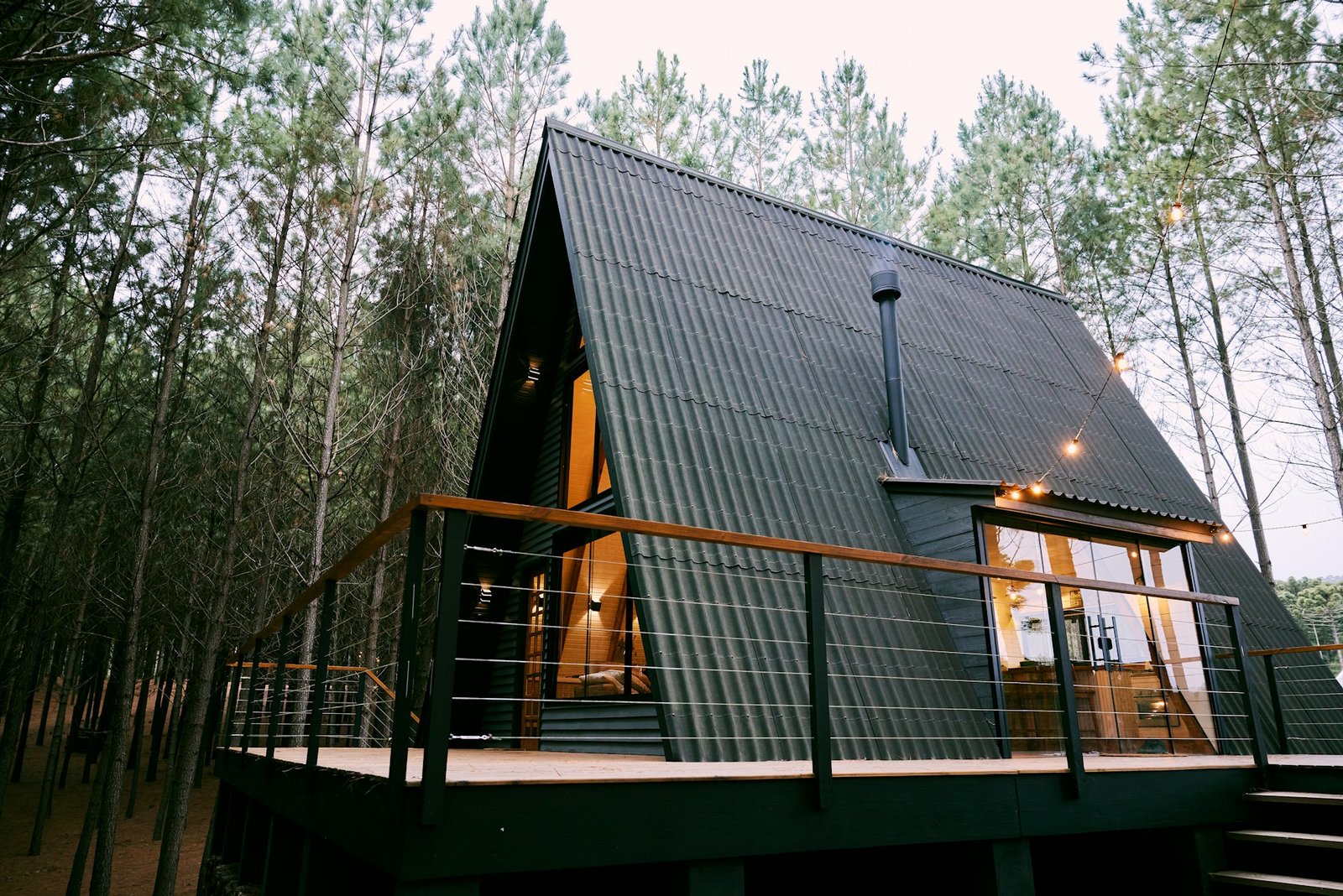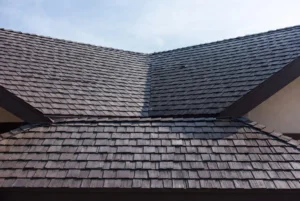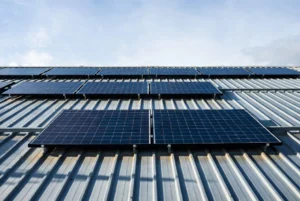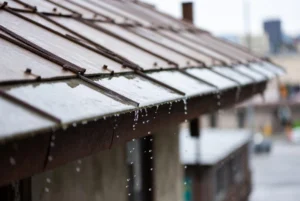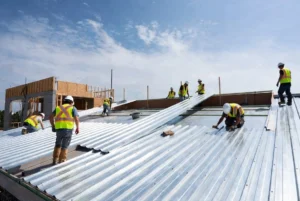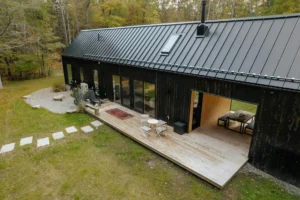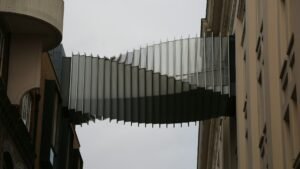When considering a new roof, understanding metal roofing prices is crucial for making an informed decision. Metal roofing typically ranges from $5 to $14 per square foot installed, with total costs for an average 2,000 square foot home ranging from $8,500 to $25,000.
The metal roofing price per square foot varies significantly based on the type of metal you choose—whether it’s affordable galvanized steel at $5-$9 per square foot, mid-range aluminum at $6-$12 per square foot, or premium copper and zinc options reaching $14 per square foot. These price variations reflect differences in material durability, aesthetic appeal, and installation complexity.
This comprehensive guide breaks down everything you need to know about metal roofing costs, from material prices and installation expenses to regional variations and money-saving strategies.
Average Metal Roofing Prices by Material Type
Understanding the cost of metal roofing starts with knowing your material options. Each type of metal offers different benefits, aesthetics, and price points. The market has evolved significantly, with manufacturers now offering various grades and finishes within each material category. Premium coatings like Kynar 500 or Galvalume can add $1-2 per square foot but provide superior weather resistance and color retention. Regional factors also play a role—coastal areas often require marine-grade materials that cost 15-20% more than standard options.
Table 1: Metal Roofing Cost Comparison
| Material Type | Cost per Sq Ft | Cost per Square (100 sq ft) | Average Total Cost (2,000 sq ft roof) |
| Steel/Galvanized | $5-$9 | $500-$900 | $10,000-$18,000 |
| Aluminum | $6-$12 | $600-$1,200 | $12,000-$24,000 |
| Copper | $9-$14 | $900-$1,400 | $18,000-$28,000 |
| Zinc | $8-$13 | $800-$1,300 | $16,000-$26,000 |
| Tin | $5-$12 | $500-$1,200 | $10,000-$24,000 |
Steel remains the most popular choice due to its balance of durability and affordability. Galvanized steel with a G-90 coating offers excellent protection at the lower price range, while Galvalume-coated steel provides superior corrosion resistance for slightly more. Aluminum excels in coastal environments where salt spray is a concern, justifying its higher price point. Copper and zinc represent the premium tier, offering unmatched longevity and developing distinctive patinas over time. These materials often come with 50+ year warranties and can last over a century with proper installation.
7 Key Factors That Affect Metal Roof Costs
Multiple variables influence the final metal roof cost beyond just material selection. Understanding these factors helps homeowners budget accurately and avoid unexpected expenses during their roofing project.
- Roof Size and Complexity • Square footage calculations determine base material needs—larger roofs benefit from volume discounts • Pitch and slope considerations affect installation difficulty and safety requirements • Number of valleys, dormers, and penetrations increase labor time and material waste
- Material Quality and Thickness • Gauge measurements range from 29 (thinnest) to 22 (thickest), with 24-26 gauge being standard • Coating types including Galvalume, Kynar, and PVDF affect longevity and price • Warranty differences from 20-year to lifetime coverage impact initial investment
- Installation Complexity • Tear-off requirements add $1-3 per square foot if removing existing roofing • Underlayment needs vary from basic felt to high-temp synthetic barriers • Fastening systems choice between exposed screws and concealed clips affects cost and aesthetics
- Geographic Location • Labor rate differences can vary 50% between rural and urban markets • Transportation costs increase in remote areas or for specialty materials • Local building codes may require specific ratings for wind, fire, or seismic activity
- Roof Style Selection • Standing seam systems cost 20-30% more than exposed fastener panels • Metal shingles provide traditional aesthetics at premium prices • Custom profiles or historical reproductions can double standard panel costs
- Color and Finish Options • Standard colors typically included in base price • Premium colors and custom matches add $0.50-$1.50 per square foot • Energy-efficient cool roof coatings may qualify for rebates despite higher initial cost
- Contractor Experience • Certified installers charge 15-25% more but provide manufacturer-backed warranties • Warranty implications can void coverage if installed by non-certified contractors • Installation quality differences affect long-term performance and maintenance needs
Metal Roofing Installation Costs Breakdown
Breaking down installation costs helps homeowners understand where their money goes and identify potential areas for savings. Professional installation represents a significant portion of the total project cost but ensures proper performance and warranty validation.
Table 2: Installation Cost Components
| Component | Percentage of Total Cost | Average Cost Range |
| Materials | 40-50% | $4,000-$12,500 |
| Labor | 35-45% | $3,500-$11,250 |
| Tear-off/Disposal | 5-10% | $500-$2,500 |
| Permits/Misc | 5-10% | $500-$2,500 |
Labor costs vary significantly by region, with metropolitan areas commanding premium rates. Experienced metal roofing specialists charge $75-125 per hour compared to $45-75 for general roofers. While DIY installation can save 35-45% on labor costs, it risks voiding manufacturer warranties and may lead to costly mistakes.
Hidden costs frequently surprise homeowners during metal roofing projects:
- Structural reinforcement may be needed for heavier materials like tile-profile steel
- Ventilation upgrades ensure proper airflow and prevent condensation issues
- Flashing replacement around chimneys and skylights ensures watertight installation
- Gutter system updates accommodate different water flow patterns from metal surfaces
Cost Comparison: Metal Roofing vs. Traditional Materials
Evaluating metal roofing prices against traditional options reveals the true long-term value proposition. While initial costs appear higher, the extended lifespan and reduced maintenance requirements often make metal roofing more economical over time.
Table 3: 30-Year Cost Analysis
| Roofing Type | Initial Cost | Maintenance (30 years) | Replacement | Total 30-Year Cost |
| Metal | $15,000 | $1,500 | $0 | $16,500 |
| Asphalt Shingles | $7,500 | $3,000 | $7,500 | $18,000 |
| Wood Shakes | $12,000 | $6,000 | $12,000 | $30,000 |
| Clay Tiles | $20,000 | $4,000 | $0 | $24,000 |
Beyond direct costs, metal roofing provides additional financial benefits. Energy savings from reflective coatings can reduce cooling costs by 10-25%, saving $200-500 annually in warmer climates. Insurance companies often offer 5-35% premium reductions for impact-resistant metal roofing, particularly in hail-prone regions. Home resale values typically increase 1-6% with metal roofing, recouping 60-85% of the initial investment. These cumulative savings make metal roofing increasingly attractive despite higher upfront costs.
5 Ways to Save Money on Metal Roofing
Smart planning and strategic decisions can reduce metal roofing costs without compromising quality or longevity.
- Choose Off-Season Installation • Best months for discounts are November through March when demand drops • Contractor availability benefits include more scheduling flexibility and attention to detail
- Compare Multiple Quotes • What to look for in estimates: detailed material specifications and warranty terms • Red flags to avoid include unusually low bids or pressure tactics
- Consider Exposed Fastener Systems • Cost savings versus standing seam can reach 30-40% on materials and labor • Appropriate applications include agricultural buildings and budget-conscious projects
- Buy Direct from Manufacturers • Bulk purchasing options for DIY installers or contractor partnerships • Contractor material markups typically add 20-35% to wholesale prices
- Look for Rebates and Incentives • Energy efficiency tax credits may cover 10-30% of qualifying cool roof systems • Local utility programs offer rebates for reflective roofing in many municipalities • Manufacturer promotions during slow seasons can save 10-15% on materials
Conclusion
Metal roofing prices range significantly based on material choice, installation complexity, and regional factors, but the investment consistently proves worthwhile through exceptional longevity and minimal maintenance requirements. While initial costs of $8,500-$25,000 exceed traditional roofing options, the 50-70 year lifespan, energy efficiency benefits, and enhanced property value justify the premium for most homeowners.
Frequently Asked Questions
Q: What is the cheapest metal roofing option?
A: Corrugated steel panels with exposed fasteners, typically $5-$7 per square foot installed, offer the most affordable metal roofing solution while still providing 40+ years of service life.
Q: How much does metal roofing cost for a 1,500 sq ft house?
A: Expect to pay $7,500-$21,000 depending on material choice and roof complexity, with most homeowners spending $12,000-$15,000 for quality standing seam steel systems.
Q: Is metal roofing worth the extra cost?
A: Yes, considering the 50+ year lifespan, energy savings of 10-25%, and minimal maintenance requirements, metal roofing typically provides better long-term value than traditional materials.
Q: Can metal roofing be installed over existing shingles?
A: Often yes, saving $1,000-$3,000 in tear-off costs, but check local codes and ensure proper ventilation channels are created between layers.
Q: What’s included in metal roofing installation prices?
A: Materials, labor, underlayment, fasteners, trim, flashing, and basic warranty coverage are standard inclusions, though additional items like skylights or snow guards cost extra.
